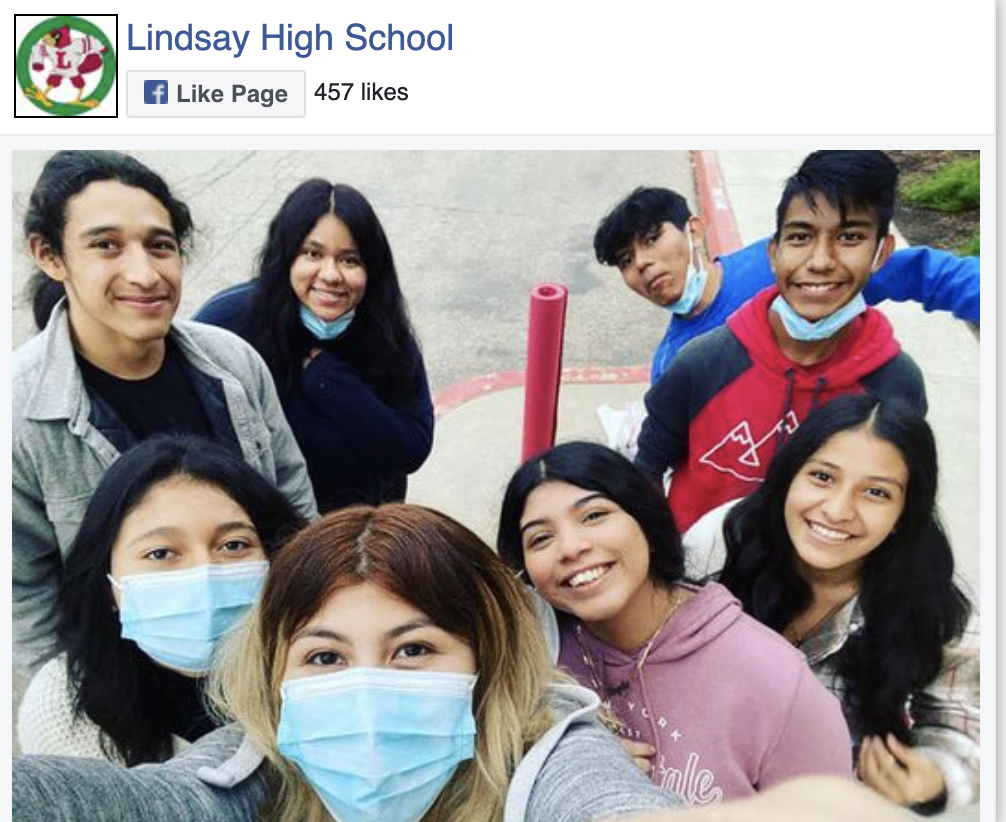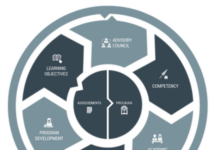
Image: Lindsay High School CA
West, C. (2021) How to do online learning well? A California district has some answers The Hechinger Report, December 19
In my search for relevant material for the k-12 sector for the third edition of Teaching in a Digital Age, I came across this very good report on the use of competency-based learning in a California school system. I have condensed the article somewhat so please read the original article for more detail.
The school system
Lindsay Unified School District is located in California about 60 miles north of Bakersfield. More than 90 percent of the 4,000 children enrolled in Lindsay Unified are socioeconomically disadvantaged, and about 40 percent are English language learners. Ninety five percent of students in the district are Hispanic.
Competency-based learning
Because of historically poor learning outcomes and graduation rates, in 2007 the School District decided to switch to a “a learner centered, personalized, competency-based” approach. (Today, 6 to 10 percent of public school districts across the United States are piloting or planning competency-based approaches.) Competency based learning is used throughout the Lindsay Unified School System from kindergarten through to Grade 12.
The approach enables students to take charge of their own learning while they work towards a common set of learning goals. Students receive meaningful feedback on their progress and receive support until they achieve those goals. They show their mastery of a subject by presenting evidence, such as a paper or project, demonstrating what they know and are able to do.
Students receive grades of between 1-4 on each competency or learning outcome. A grade of 1 or a 2 does not mean students have failed, only that they have more work to do to move on to the next level.
Every teacher in the district does a personalized learning plan with each of the students at least twice a year. Instead of 90-minute block lessons, most of the teaching is in individualised mini-lessons. Within each class, students are grouped based on the learning targets they are trying to reach and their progress towards meeting those targets.
A teacher may teach three English classes, each at a different level, with students in each class grouped according to the progress they’ve made towards a learning target. She still gives short 15- to 20-minute lessons on topics that are applicable to the entire class, but then spends the rest of class period working with students in small groups or one-on-one. Teachers report that competency-based learning does not create extra work but different work.
The role of technology
Almost 90 percent of the district’s students and their families have access to free internet at home, as a result of the city providing free community Wi-fi. Students have access to take-home devices and individualized learning plans that allow them to progress through class material at their own speed. Devices are age-appropriate and replaced every three years.
The district’s learning management system, emPower, is an online dashboard that allows teachers to upload, grade and keep track of assignments for their class. It also contains “playlists,” which might include videos or reading assignments, that students complete as they progress through a class. Empower also allows school administrators to pull aggregate reports on students’ pacing — whether and how quickly they are making progress in their respective subject areas.
Outcomes
The number of students proficient on California’s academic standards increased from 26 percent in 2014-15 to 47 percent in 2018-19. Graduation rates rose from 69 percent in 2010-11 to 90 percent in 2017-18. College-going rates increased from 66 percent to 70 percent, and more students are going to four-year colleges, according to district data.
During the pandemic the results were mixed, although younger students and more disadvantaged students still made more progress than their peers in other districts around the country with similar demographics. Overall, the pandemic reinforced the role of competency-based learning and technology-based teaching in Lindsay.
My comments
Competency-based learning is usually associated in post-secondary education with partnership with employers to help determine desired competencies, but this article is an example of meeting State-wide educational standards through competency-based learning.
Except for the pandemic, when everything was done online, this application is really a blended learning model, with a good deal of in-person learning as well as other learning done online. It is utterly dependent though on good access to technology, both in terms of devices and easily accessible and free Wi-Fi access. It combines individual and group learning with individualised feedback and lesson-planning.
I was also interested to learn that this model worked best for younger and more disadvantaged students during the pandemic, compared with comparable school systems who moved more traditional classes online. That this model has proved so successful with low income families is of particular importance, bu that is not to say that it could not work equally well with other student demographics.
.









 Dr. Tony Bates is the author of eleven books in the field of online learning and distance education. He has provided consulting services specializing in training in the planning and management of online learning and distance education, working with over 40 organizations in 25 countries. Tony is a Research Associate with Contact North | Contact Nord, Ontario’s Distance Education & Training Network.
Dr. Tony Bates is the author of eleven books in the field of online learning and distance education. He has provided consulting services specializing in training in the planning and management of online learning and distance education, working with over 40 organizations in 25 countries. Tony is a Research Associate with Contact North | Contact Nord, Ontario’s Distance Education & Training Network.

